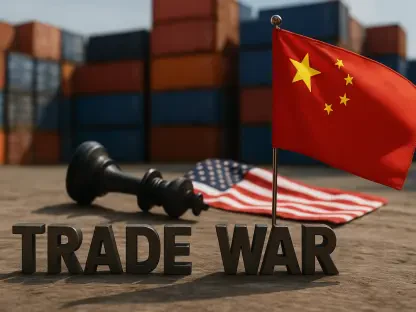Priya Jaiswal is renowned for her insights into Banking, Business, and Finance, with a special knack for market analysis. Today, we delve into the nuanced world of value investing, exploring why it has thrived outside the US more than domestically, among other intriguing investment dynamics.
How would you define value investing, and what are its core principles?
Value investing is all about seeking investments that are undervalued compared to their intrinsic worth. Our goal is to find assets with strong fundamentals that the current market price might not fully reflect. The core principles include focusing on companies with solid earnings, stable cash flows, and good management, always with a lens toward the long term. Patience and a deep understanding of the market are essential.
Why do you think value investing has worked better internationally than in the U.S.?
The international markets have varied dynamics. Many economies outside the US have seen their financial sectors and traditional industries like energy driving growth, supported by favorable conditions like higher interest rates. Conversely, the US has been characterized by a unique set of economic circumstances favoring growth stocks and sectors heavily invested in technology.
What specific factors have contributed to this trend?
Several factors come into play. Firstly, industries like finance and energy, which often provide attractive valuations, have seen strengthened performance internationally due to economic policies and conditions. Secondly, emerging markets have captured value interest, driven by shifts in growth patterns—particularly away from Chinese internet companies. Finally, the lack of mega-cap stocks similar to the Magnificent Seven internationally has steered investors towards value plays.
Can you explain the difference between the ‘Magnificent Seven’ and the ‘Granolas’?
The Magnificent Seven are major US growth stocks that include tech giants dominating investor portfolios. These companies have seen exceptional growth and valuation expansion. The Granolas, on the other hand, are a European attempt to replicate that success, with a focus on well-known stocks like Nestle and AstraZeneca. However, they haven’t matched the market performance or scale seen in the US.
How did these groups of stocks impact the investing landscape?
These groups created stark contrasts between growth and value narratives. The Magnificent Seven have influenced the gravitation towards tech-driven growth in the US, whereas the Granolas feature more traditional industries, which have played roles in bolstering the value narrative in Europe. They underscore regional differences in market leadership and investor appetites.
What role has the financial-services sector played in boosting value investing internationally?
The sector has been quite significant, largely due to rising interest rates boosting its performance. Financial stocks are inherently linked to interest rate environments, and recent hikes in regions like Japan have turned in favor of value investing by enhancing profitability prospects for these institutions.
How have higher interest rates affected this sector?
Higher rates generally increase net interest margins for banks, improving their earnings potential and investor appeal. This environment has been conducive to value investors seeking stable returns from sectors that thrive in cyclical or rate-advantageous conditions.
How have emerging markets like China, India, and Brazil contributed to the success of value investing outside the U.S.?
Emerging markets have provided fertile ground for value strategies. Transition away from previously dominant growth sectors, like Chinese internet companies, has allowed traditional industries to lead. Nations like India and Brazil have economies where value often emerges from under-the-radar companies or sectors experiencing cyclical upswings.
What unique circumstances have led to growth outperforming value in the U.S.?
In the US, unique macroeconomic conditions along with technological innovation have propelled growth stocks to outperform. Trends in AI and technology, amplified by low interest rates and strong consumer adoption, have created historically unprecedented environments favoring rapid growth.
Why do you think growth stocks were able to bounce back in 2023 despite high interest rates?
This resilience stems largely from enthusiasm surrounding technological advancements and AI. Companies leading these innovations have maintained investor interest and cash flows even amidst tough rate environments, showcasing their ability to perform irrespective of traditional market pressures.
Can you discuss some of the structural challenges currently facing value stocks in the U.S.?
Value stocks are currently confronting issues like being seen as potentially outdated in a rapidly evolving tech-driven market. The perception of being trapped in cyclical businesses with limited growth potential makes them less attractive compared to dynamic growth sectors.
What potential does AI have in reshaping the future of investing?
AI holds transformative capacity, potentially altering how we conduct market analyses, make predictions, and manage portfolios. Its ability to process vast data efficiently is set to redefine investment decisions and strategies, potentially unlocking new avenues within the scope of both value and growth investing.
How might market cycles influence the future of value investing?
Market cycles play a vital role in shifting investor focus between growth and value. As conditions change, we might see a resurgence in value investing if cyclical industries regain momentum or if investor sentiment shifts towards undervalued, stable sectors once again.
Do you think we might see a shift in favor of value stocks in the near future?
Indeed, it’s plausible. As economic conditions and interest rates normalize, traditional sectors showing resilience might draw attention back to value stocks. Cyclicality and investor sentiment often lead the charge in turning the tide between growth and value.
How do you view the current state of style leadership in investment strategies?
The current landscape is somewhat tumultuous, with growth continuing to make strides despite traditional incumbents like value stocks being overshadowed. Technological advancements are dictating leadership, but style leadership remains fluid, often swayed by broader economic changes.
Looking ahead to 2025 and beyond, what factors could indicate a new market regime or inflection point?
Factors could include major technological innovations, regulatory changes, or significant economic shifts. Watching interest rates and geopolitical developments might provide insight into a potential change in market dynamics, possibly signaling an inflection towards value or a new hybrid investing approach.









